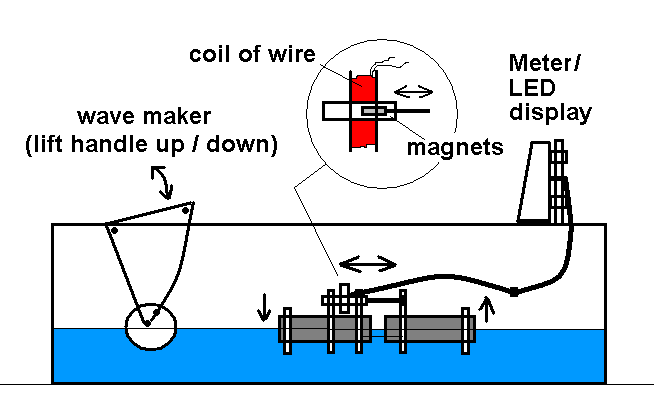Wave Tank II - The Sea Snake Gen.
At one end of the tank we have a handle that can be moved up and down to create water waves. Here the wave power generator consists of two buoyant tubes connected by a simple hinge. One tube has a coil of wire attached to it and within this are magnets which are connected to the second tube. As a wave goes past it causes the tubes to move relative to each other which moves the magnets within the coil - this generates electricity. A meter shows the voltage produced, peak powers will light the LED. An experimental 'snake like' system off the coast of Portugal (the Pelamis design) uses waves and swell to make electricity.

This equipment is currently traveling around southern England as part of the "who is going to keep the light on?" SEPnet exhibition for GCSE students. If you go to the events you might like to think about the following:
Things to do: use the handle to create waves but please be gentle so that you don't damage the equipment. You might find that the largest / fastest movement of the handle does not always create the most electricity. Are the quick (short) waves or the slow (long) waves best? Can you see how the waves move the parts of the apparatus that generate electricity? Can you think of anything that might improve the efficiency? What are the limitations of harnessing wave power using this method?
For details of the electrical generators used in these designs please see: 6 gens
SEPnet web site
CSC talks and workshops
Dr Jonathan Hare, E-mail: jphcreativescience@gmail.com
NOTE: Although none of the experiments shown in this site represent a great hazard, neither the Creative Science Centre,
Jonathan Hare nor The University of Sussex can take responsiblity for your own experiments based on these web pages.
THE CREATIVE SCIENCE CENTRE
home | diary | whats on | CSC summary | latest news

